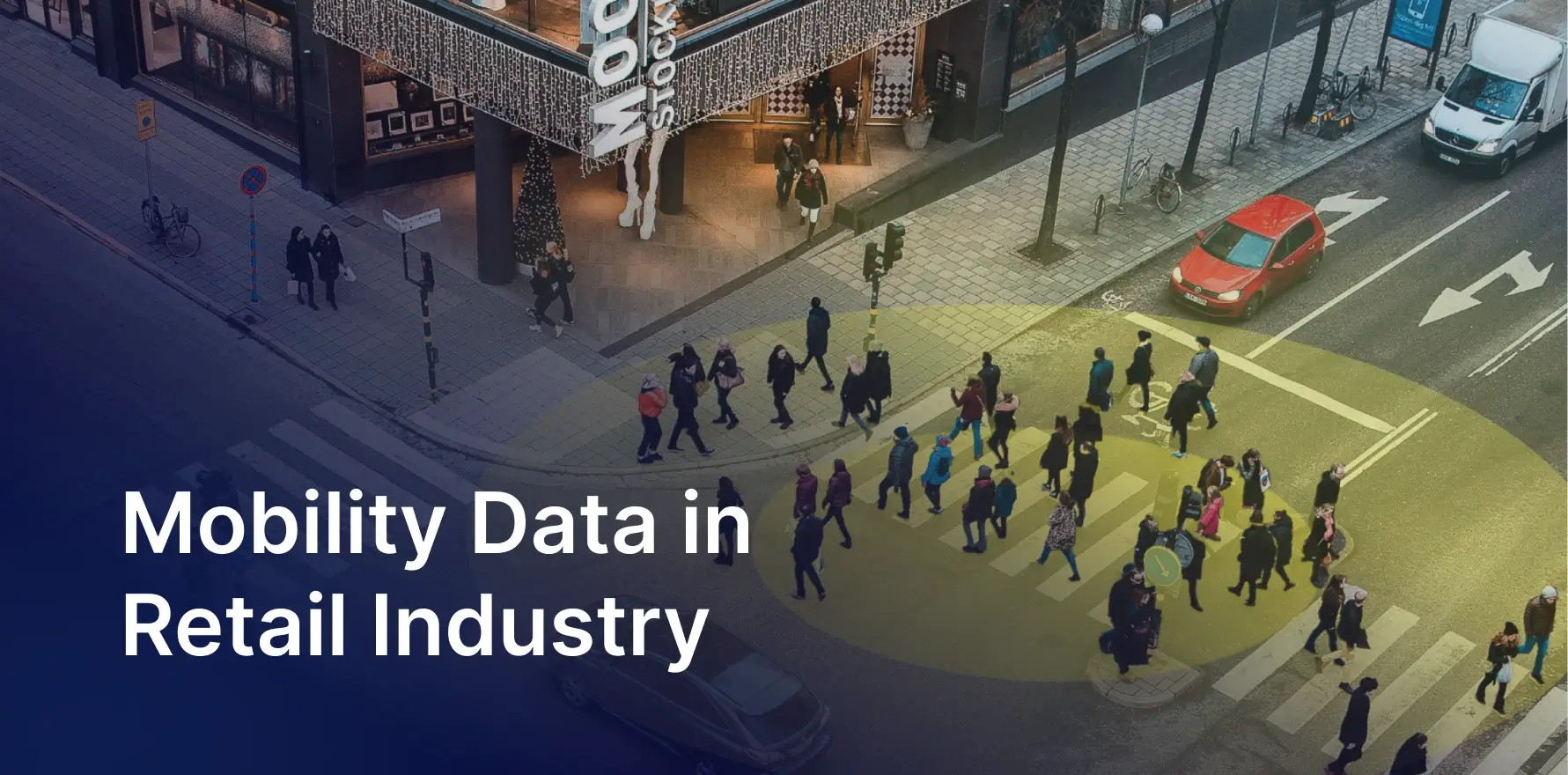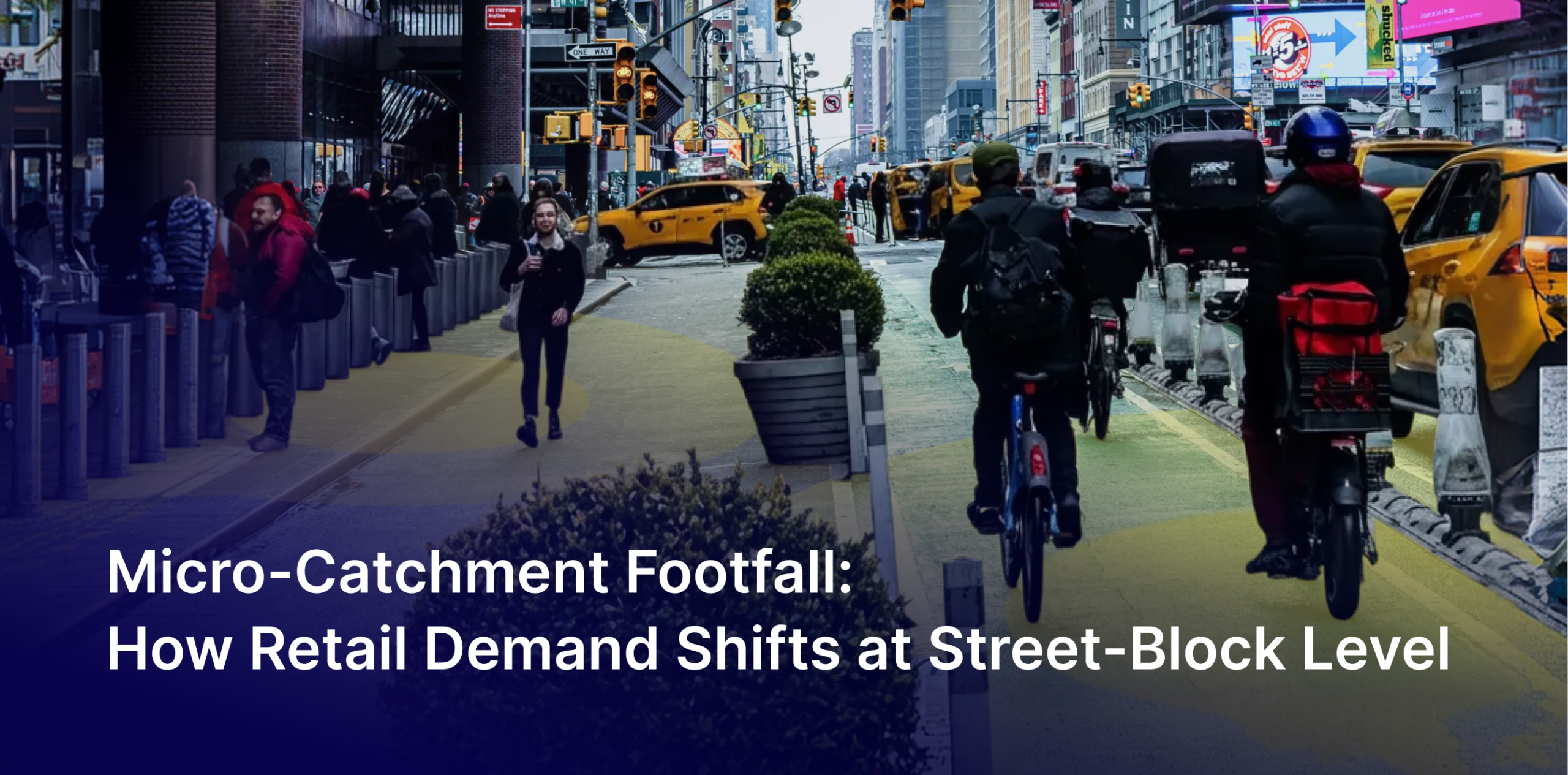The retail industry is constantly evolving, driven by changes in consumer behavior, market trends, and technological advancements. In this dynamic environment, staying ahead requires a deep understanding of customer movement, preferences, and patterns.
Mobility data, which captures people’s movement across different locations, empowers retailers to make data-driven decisions that enhance customer engagement, optimize operations, and drive growth. This control over decision-making can instill a sense of confidence in retailers, knowing that they are using the most advanced tools to guide their strategies.
According to McKinsey, data-driven organizations are 23 times more likely to acquire customers and six times more likely to retain them. This blog explores how mobility data not only transforms the retail sector but also opens up new avenues for growth, enabling businesses to thrive and succeed in the ever-changing market.
1. Optimizing Store Locations:
Choosing the right store location is critical to the success of any retail business. Mobility data gives retailers detailed insights into foot traffic patterns, customer demographics, and competitor presence.
For example, a study by PwC found that 63% of consumers shop based on proximity to their home or work. By analyzing mobility data, retailers can identify high-traffic areas and neighborhoods with a solid customer base, ensuring that new stores are positioned for maximum visibility and footfall.
2. Personalizing Customer Experience:
Understanding customer behavior within a store is critical to delivering personalized shopping experiences. Mobility data allows retailers to track customers’ movement through stores, identify popular areas, and optimize store layouts.
A Deloitte survey revealed that 49% of consumers are willing to share their data in exchange for personalized shopping experiences. Retailers can leverage mobility data to tailor marketing campaigns, enhance product placement, and create a seamless and engaging customer journey.
3. Enhancing Inventory Management:
Effective inventory management is crucial for meeting customer demand and reducing operational costs. Mobility data provides real-time insights into shopping patterns, helping retailers forecast demand more accurately.
The IHL Group estimates retailers lose $1.75 trillion annually due to stockouts and overstocks. By utilizing mobility data, retailers can optimize inventory levels, ensuring that popular products are always in stock and reducing the likelihood of overstock situations.
4. Targeted Marketing Campaigns:
Mobility data allows retailers to segment customers based on their shopping habits and preferences. A study by Accenture found that 91% of consumers are more likely to shop with brands that provide relevant offers and recommendations.
With mobility data, retailers can create targeted marketing campaigns that resonate with specific customer segments, leading to higher conversion rates and increased brand loyalty.
5. Competitive Analysis:
In a competitive retail landscape, understanding your competitors is essential. Mobility data enables retailers to monitor competitor foot traffic, analyze customer demographics, and identify market trends.
According to a study by RetailNext, stores that use data analytics experience a 15% increase in sales. By leveraging mobility data, retailers can gain a competitive edge by understanding where their competitors are thriving and identifying growth opportunities.
Conclusion:
Mobility data is revolutionizing the retail industry by providing valuable insights that help businesses make more intelligent decisions about store locations, customer experience, inventory management, and marketing. Factori has mobility data as a dataset. Download Factori’s Mobility data sample and check for the attributes that we provide.
As retailers continue to embrace data-driven strategies, those who leverage mobility data will be better positioned to succeed in a rapidly changing market. This reassurance of a competitive edge can make retailers feel more secure and prepared to face the challenges of the retail landscape.
You may also like










